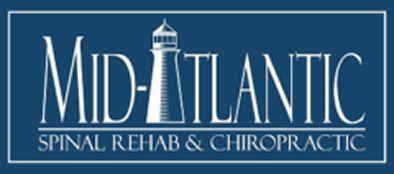More on Types of Intervertebral Disc Injuries Following Baltimore Car Accidents
In my last blog post I discussed disc protrusions as a form of disc injury following acute spinal trauma such as that which occurs in Baltimore auto accidents. In this blog post I would like to discuss another type of disc herniation called disc extrusions.
Disc extrusions are types of disc herniations in which disc material extends beyond the normal disc space, similar to disc bulges and disc protrusions. By definition the depth of the extruded disc material is longer than the width of the extruded disc segment. Whereas if you remember in disc protrusions the wideth of the protuded segment is wider than the depth of the lesion.
Generally speaking disc extrusions are usually more clinically significant than disc bulges and disc protrusions. That is because there is a longer piece of disc material extending outside of its normal boundaries. This can lead to compression within the neural canal (central canal stenosis) and/or compression in the neural foramen, leading to true nerve compression as the disc materials contacts the dorsal root ganglion or spinal nerve any level. Patients with disc extrusions sometimes respond well to chiropractic therapy in my office, but sometimes they do not.
It is important to note that due to the sensitive nature of disc extrusion type injuries, often traditional rotatory spinal manipulation is relatively contra-indicated. That is, there is a concern that manual manipulation of the spine can lead to a worsening of the condition. With these patients I generally take a “less is more approach” and begin with mobilization techniques to their spines rather than full on chiropractic spinal manipulation.
Again, the best way to characterize a disc injury with patients following Baltimore whiplash or Baltimore auto accident injuries is via MRI. The MRI will help the treating provider and patient understand which neurological structures may be compressed. In these instances it may be important to refer the patient to an orthopedist or to a pain management specialist to consider either surgical or non surgical approaches towards pain relief.
While patients with disc bulges and even some disc protrusion may or may not have symptoms, a patient with a disc extrusion is not that hard to spot clinically. They usually have intense lower back pain with concurrent radiating pain down their arm or leg, past their elbows or knees, that does not abate regardless of position. Sometimes there are lower motor neuron findings of numbness, tingling, or weakness also associated with these injuries. If left for too long of a period patients with these complaints run the risk of long term nerve damage and pain.
With any disease process or injury, the most important step is getting access to care quickly and making an appropriate diagnosis. All to often I have seen patients that have found me after treating with other physical therapists or chiropractors that have not improved after months of treatment. I typically recommend MRIs in these challenging cases and then refer the clients for pain management or surgical intervention if clinically indicated. While I am a chiropractor and spend the majority of my day utilizing chiropractic spinal manipulation it is important to recognize that a patient’s needs come before my own. I will always make an appropriate recommendation for care, especially if it is for a condition that I can not treat myself.
If you, or someone you know, has suffered from a disc extrusion following a Baltimore auto accident please contact Mid-Atlantic Spinal Rehab & Chiropractic at (443) 842-5500. We would be happy to help!
Dr. Gulitz
